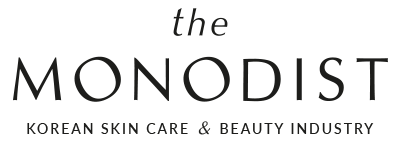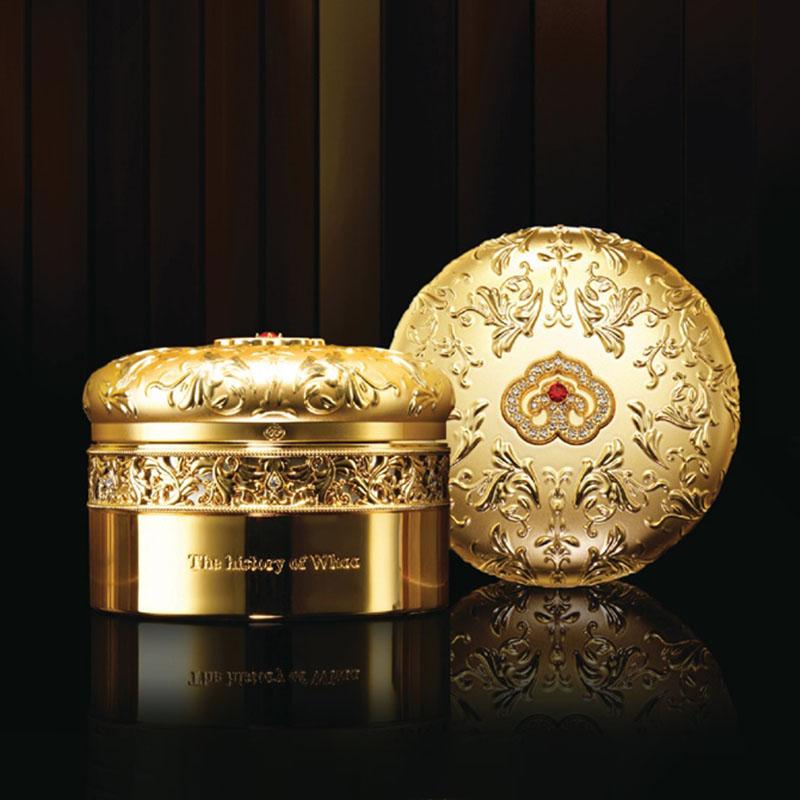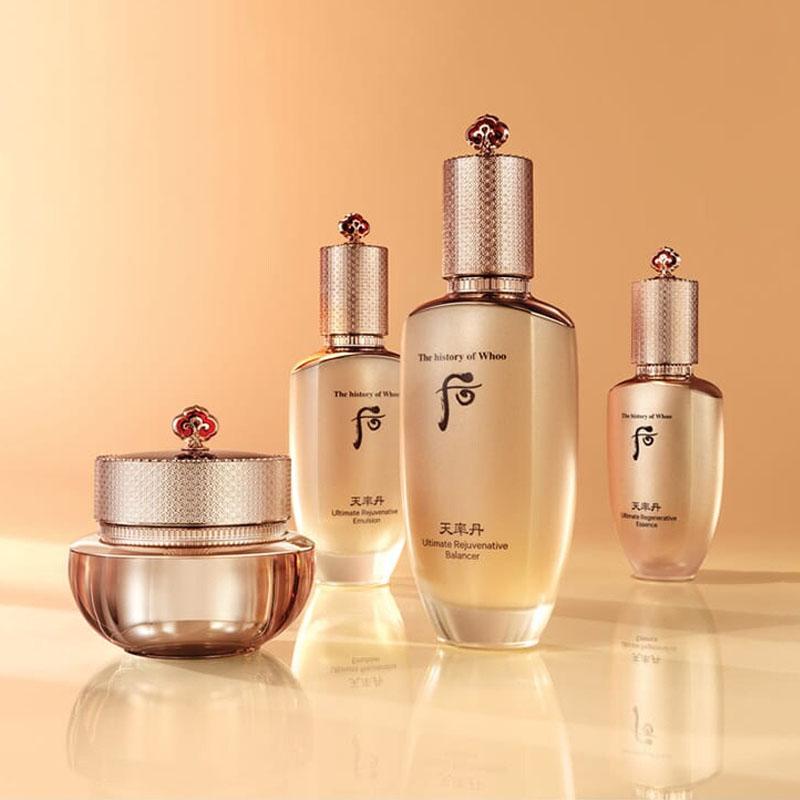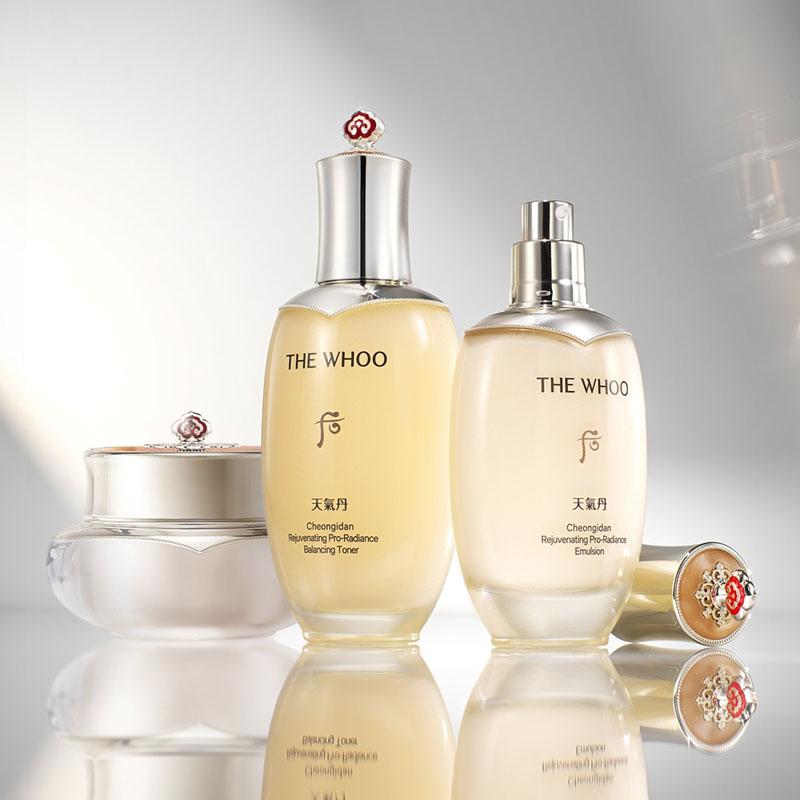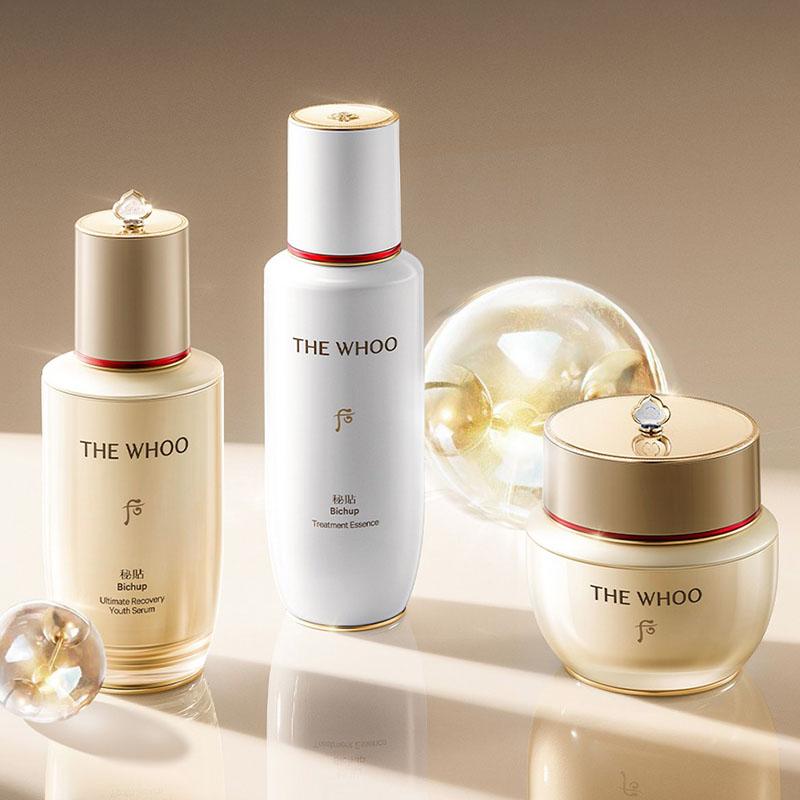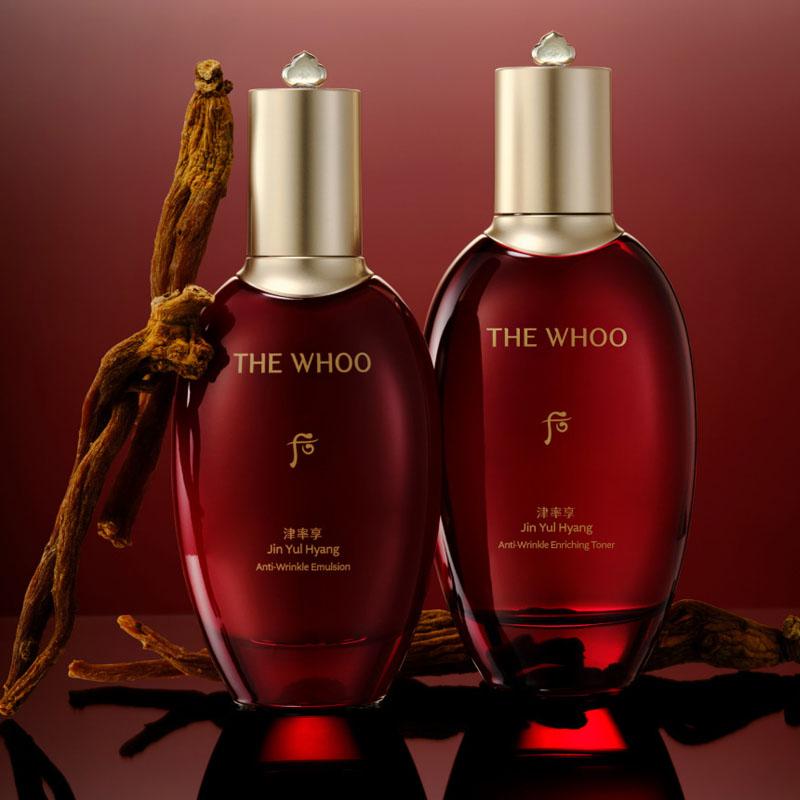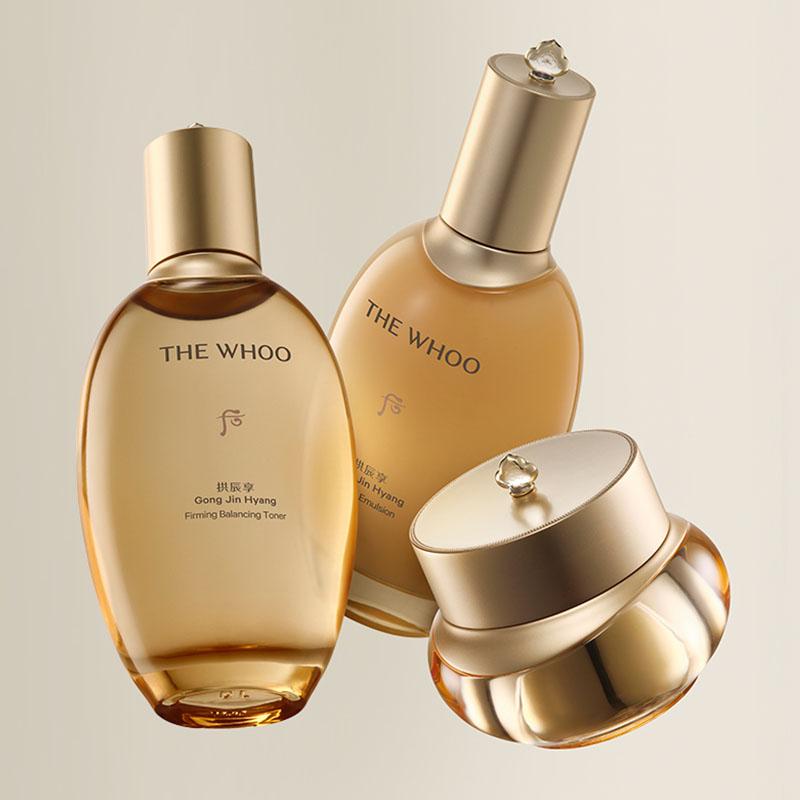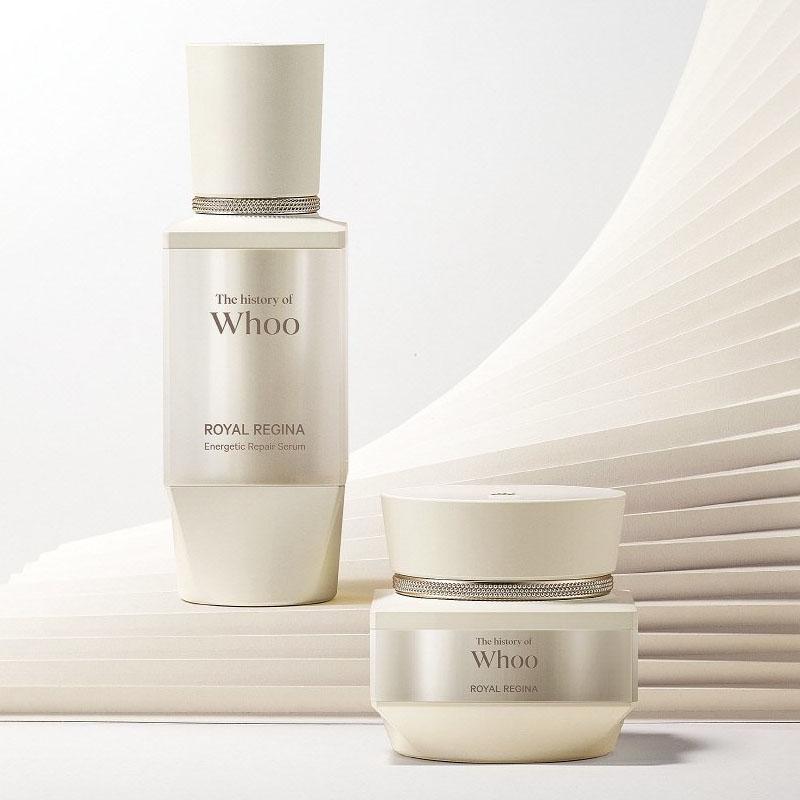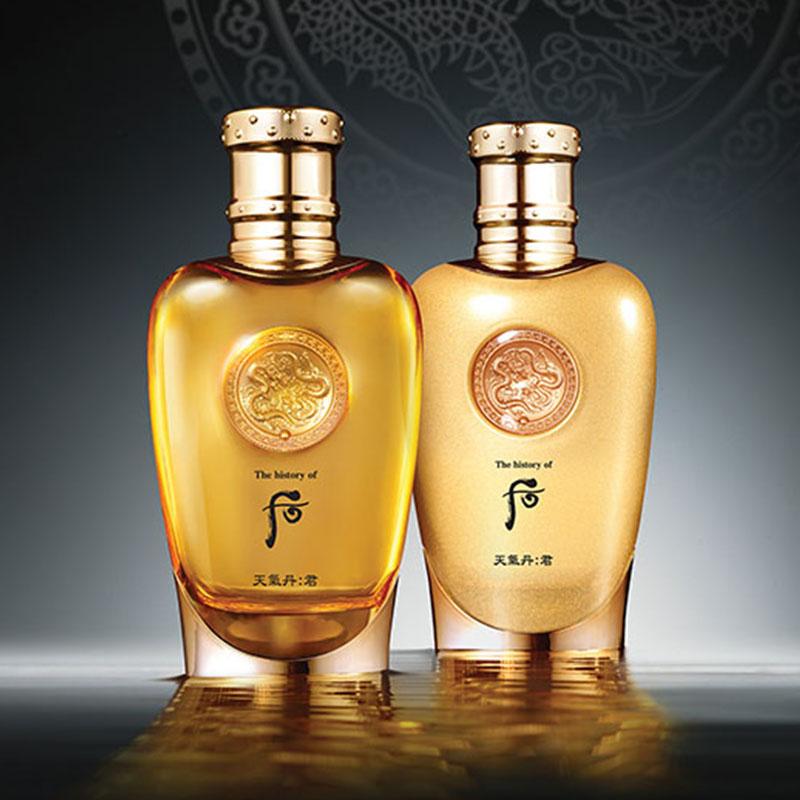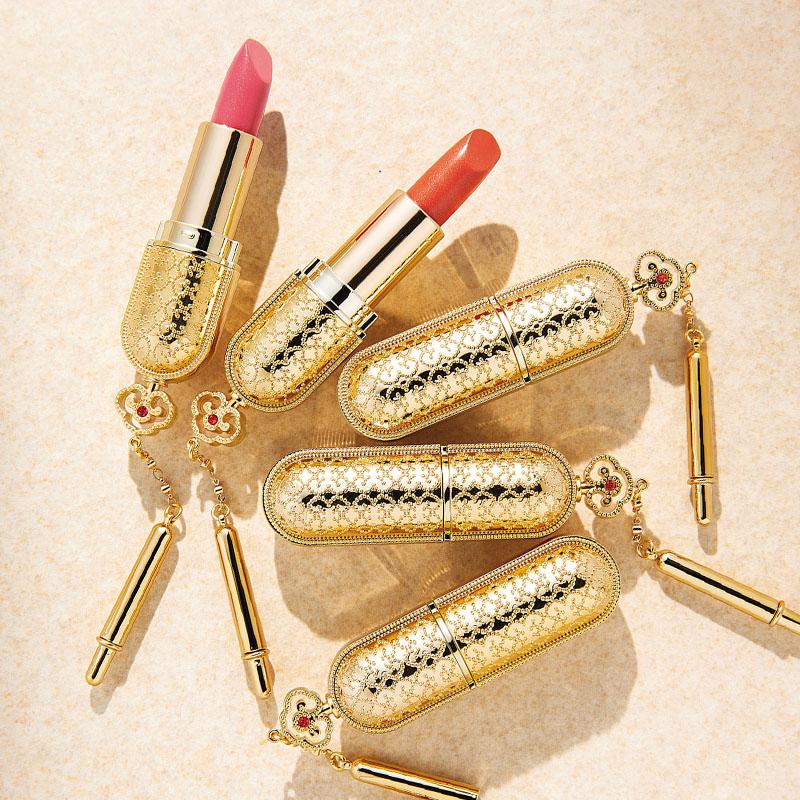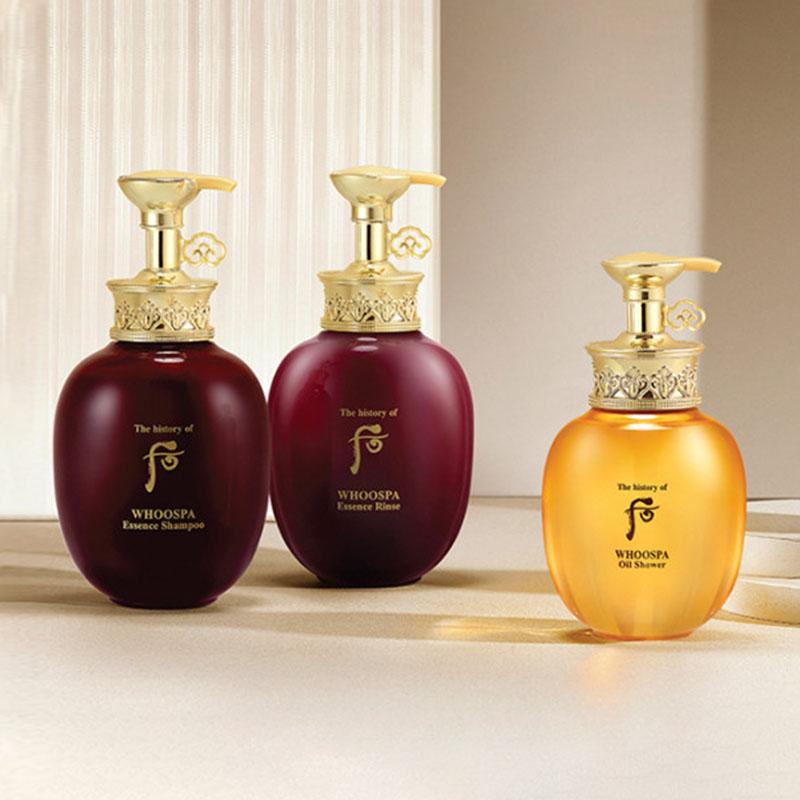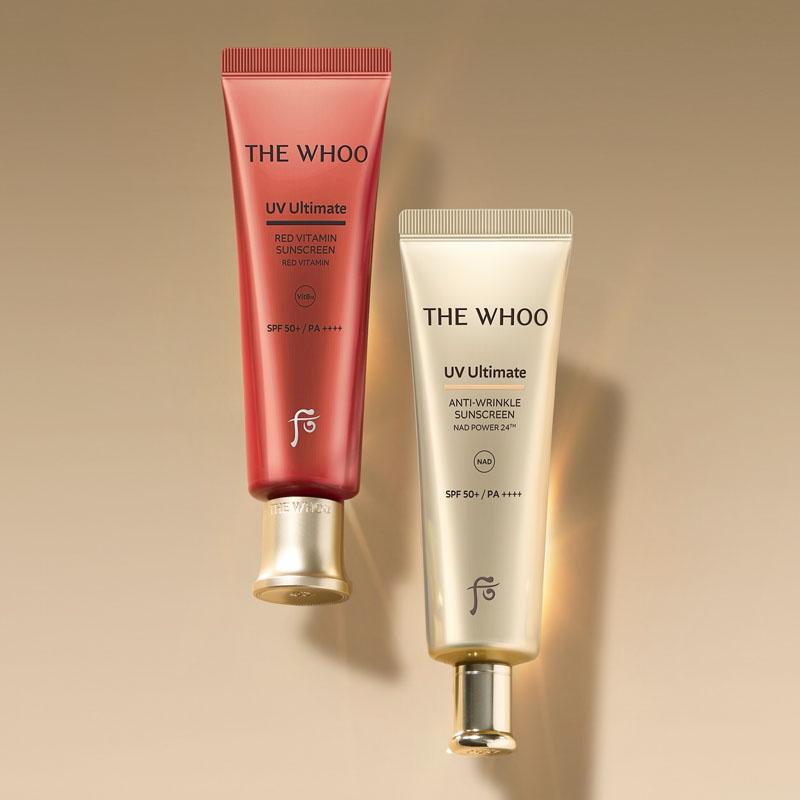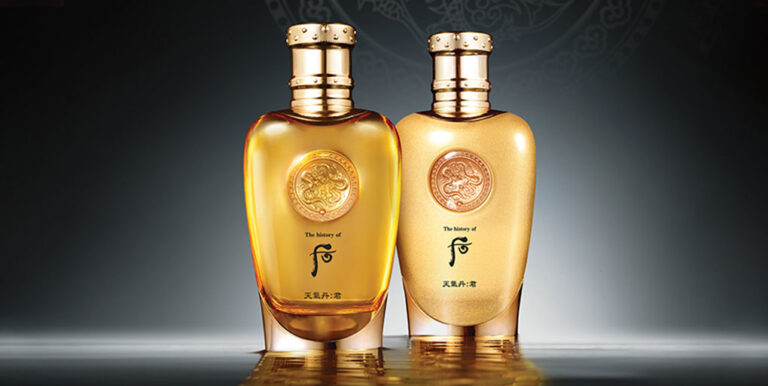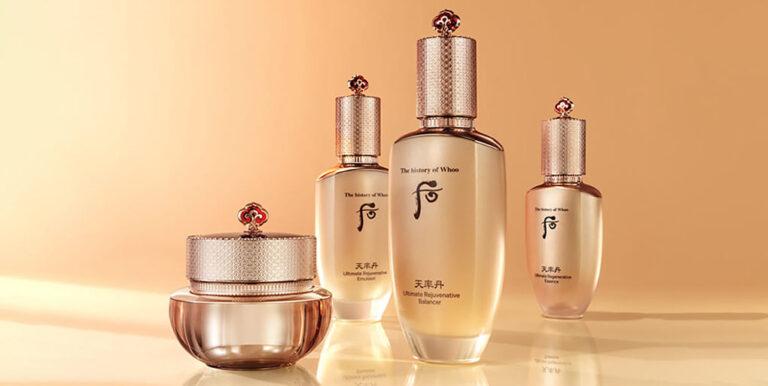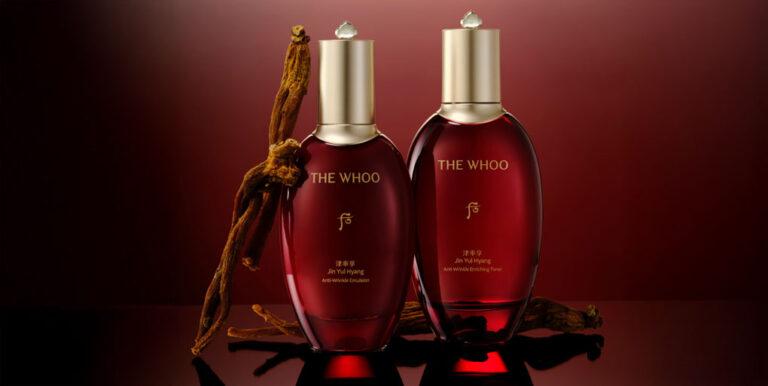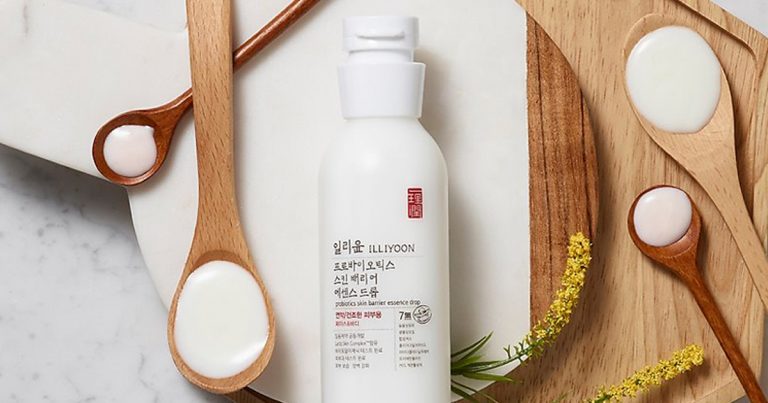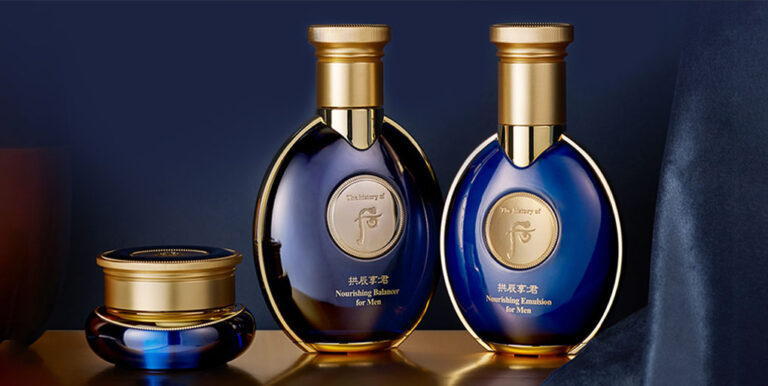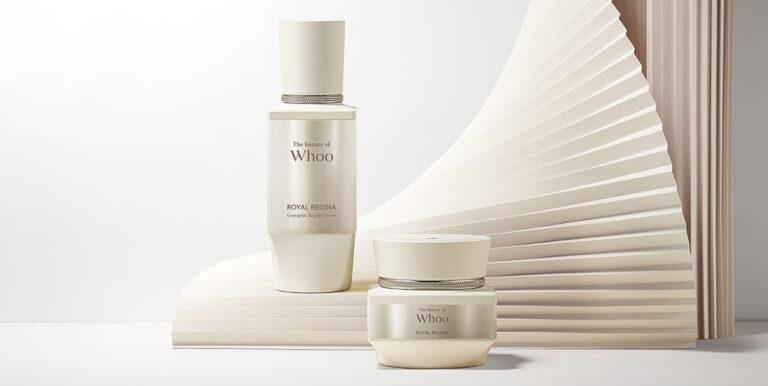korean beauty guides
The History of Whoo:
The Ultimate Guide
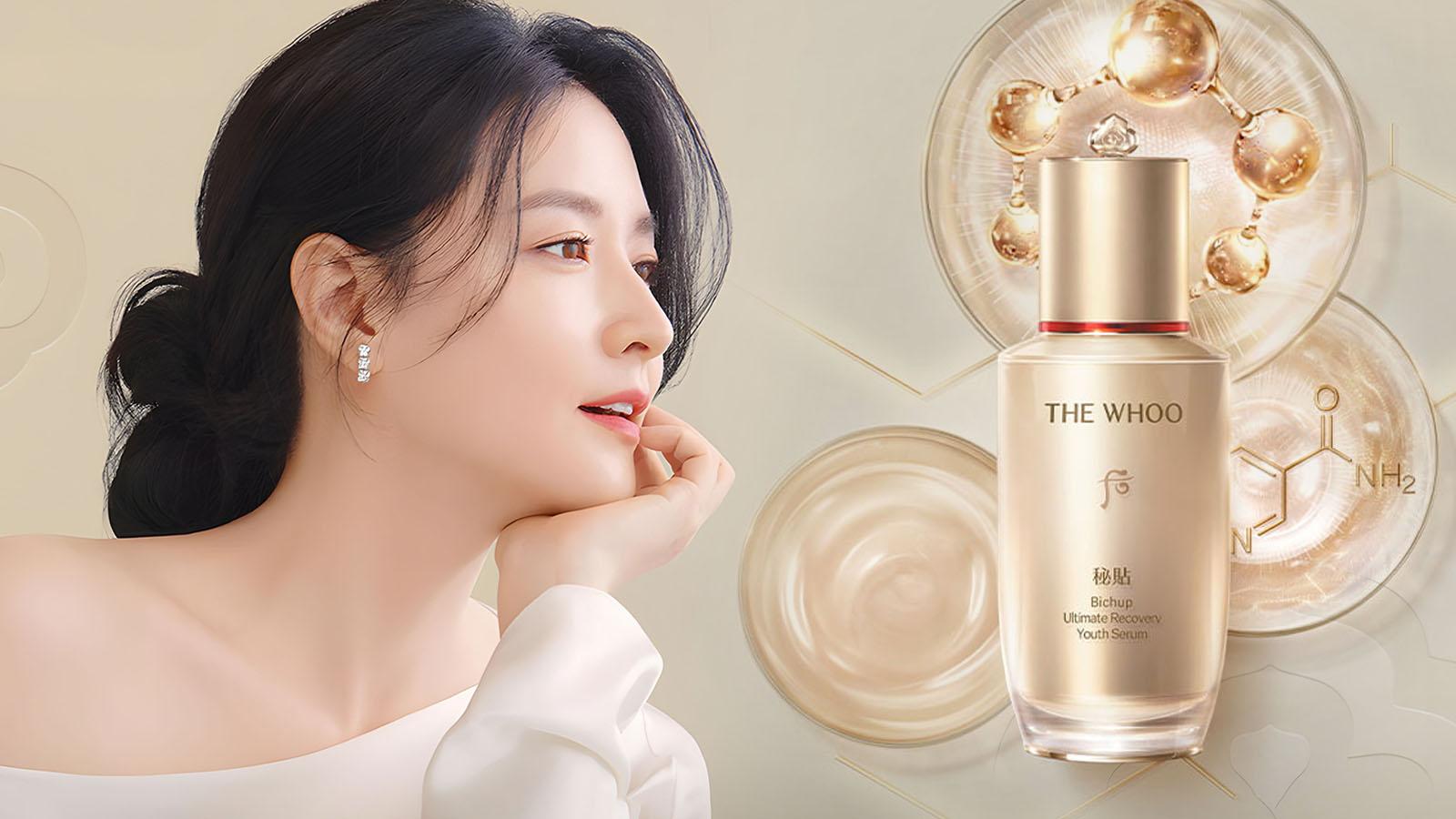
The History of Whoo (더 히스토리 오브 후) or The Whoo is a luxury Korean beauty brand created by LG Household & Health Care in 2003. The brand offers a modern reinterpretation of royal beauty care heritage, with innovative formulas that blend modern technology and traditional oriental medicine prescriptions originally reserved for royal families.
This article aims to provide a comprehensive introduction to The History of Whoo and a breakdown of its lines and products.
Many concepts mentioned in this guide are based on Oriental Medicine principles, for a better understanding please refer to the introduction to Traditional Korean Medicine on this website. It’s important to stress out that there is no correspondence between Oriental Medicine organs and Western anatomy so capitalised names in this article shouldn’t be interpreted in the Western medical sense.

Origins
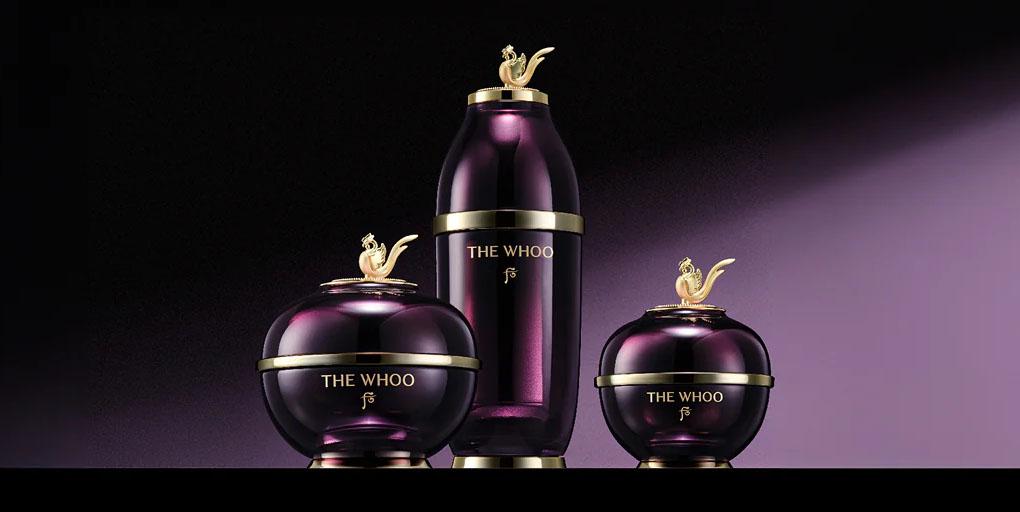
In the early 2000s, the government of South Korea appointed beauty conglomerate LG Household & Heath Care to create a premium cosmetic brand that could showcase the extensive cultural heritage of Korea23.
In response, LG created The History of Whoo (더 히스토리 오브 후), a luxury beauty brand based on the modern reinterpretation of traditional Oriental medicine prescriptions found in the royal records of Korea and China. The History of Whoo places great emphasis on the use of premium eastern medicinal ingredients and elaborate herbal complexes that draw inspiration from the traditional beauty formulas used by in Eastern royal courts.
LG Household & Heath Care states that in the development process of the brand, its research team thoroughly analysed seminal texts such as “The Annals of the Joseon Dynasty” (조선왕조실록), “Daily Records of Seungjeongwon Ilgi, The Diaries of Royal Secretariat of the Joseon Dynasty” (승정원일기), “The Inner Canon of the Yellow Emperor” (황제내경, 黃帝內經), “Study on the Publication and Distribution of Jejung Sinpyeon” (제중신편, 濟衆新編) and “Efficacious Remedies of the Physicians” (세의득효방, 世醫得效方)25.
⬥ Launch
In January 2003, LG Household & Health Care held an exclusive launch event at the Samcheonggak cultural complex (삼청각) to introduce its new brand The History of Whoo. Instead of simply focusing on its new products, the company decided to host an experiential event that could emphasise the traditional and cultural value of the brand. Over the 90 minutes of the event, journalists were invited to listen to a lecture by renowned Oriental Medicine doctor Lee Kyung-Jae (이경제) as well as enjoy cultural activities like a haegeum performance and a royal tea ceremony (Seoul Intangible Cultural Property No. 27)20.
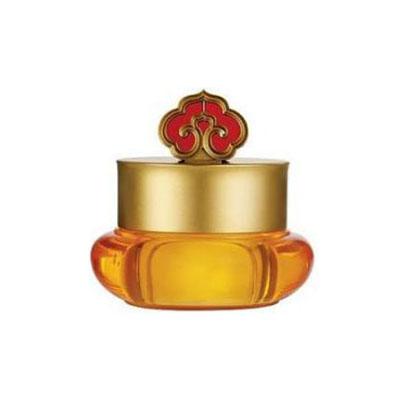
The first products introduced with the launch of The History of Whoo were: Gongjinhyang In Yang Balancer, Gongjinhyang Qi & Jin Essence, Gongjinhyang In Yang Lotion, Gongjinhyang Qi & Jin Eye Cream, and Gongjinhyang Qi & Jin Cream (pictured)21.
While these products still exist to this day, when they first launched they featured different packaging and formulas.
Before the establishment of its own research center in July 2007 (more about this in “Research & Technology”), all products from The History of Whoo were jointly developed by LG’s Natural Materials Research Institute (LG천연물연구소) and the Society of Korean Medicine Dermatology (대한한의피부과학회) under the chairmanship of professor Roh Seok-Sun (노석선) from the College of Oriental Medicine of Daejeon University (대전한의대)22.
⬥ Gong Jin Solution™
All products from The History of Whoo contain “Gong Jin Solution™” (공진솔루션™), a proprietary herbal complex that constitutes the brand’s signature ingredient. This complex represents an evolution of “Gongjinbidan” (공진비단, 供辰秘丹), which was previously the representative ingredient of the brand.
Gong Jin Solution™ is the result of The History of Whoo’s extensive integrative medicine research. The brand began by identifying and isolating the key skin-firming active ingredients found in Gongjinbidan: Glycoproteins, Arginine, and Glutamic Acid. These three active ingredients, known as “Gongjinbidan Active“, were then combined with Gongjinbidan, The History of Whoo’s original signature ingredient, to obtain the more potent Gong Jin Solution™.
Gongjinbidan (공진비단, 供辰秘丹):
The History of Whoo’s “Gongjinbidan” is based on “Gongjindan” (공진단, 拱辰丹), a traditional Oriental medicine prescription originally created by Chinese physician Wei Yilin. According to the classical text or Oriental Medicine “Efficacious Remedies of the Physicians” (세의득효방, 世醫得效方), “Gongjindan” was a remedy exclusively reserved for emperors and for this reason, it earned the name of “Emperor’s Medicine”26.
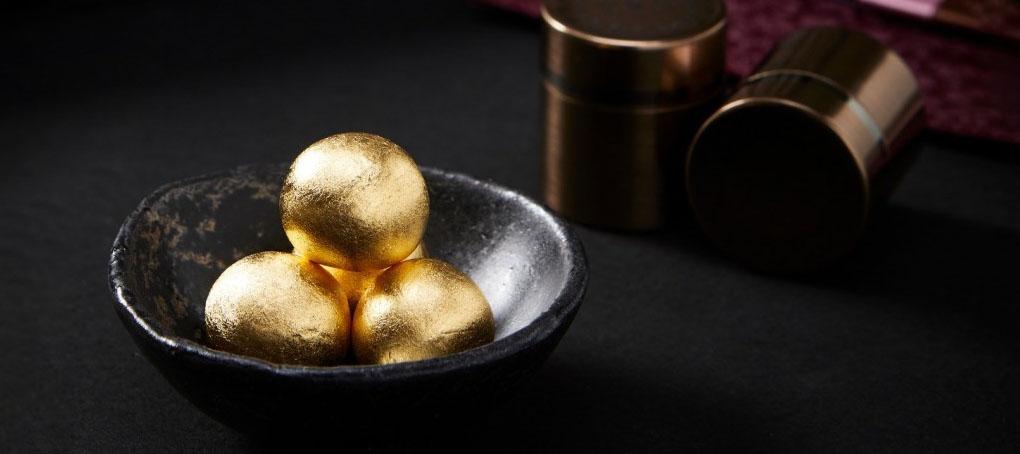
[source: 백록담한의원]
“Gongjindan” appears in many traditional medical texts from China and Korea and it’s described as a remedy that strengthens the body’s immune defences and brings back the natural balance between its organs.
The Donguibogam (the most representative text of Traditional Korean Medicine) describes “Gongjindan” as follows:
“If a man is sickly even after growing up, he is constitutionally weak. In such a case, body fluids should be increased but body heat should be cooled down. Other medicines are inefficacious against it, but this medicine is effective to harmonize internal organs with each other and to prevent various diseases.”
DONGUIBOGAM (1613)
To this day, “Gongjindan” is a vital tonic that is still commonly used in many Asian countries to combat chronic fatigue, weak constitution and deteriorated immunity.
Through the integration of modern science, LG Household & Health Care developed a cosmetic ingredient based on the original prescription for “Gongjindan”: “Gongjinbidan” (공진비단, 供辰秘丹).
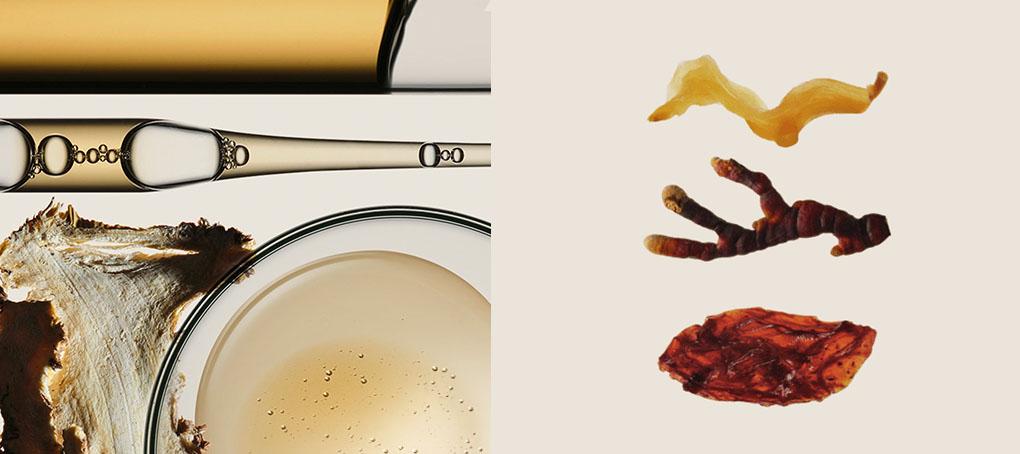
Active Tracking Technology:
At the heart of the new “Gong Jin Solution™ is The History of Whoo’s Active Tracking Technology, an innovative Hanbang Bio-Po Jae technology that effectively delivers the skin-firming properties of Gongjinbidan to the skin.
The term Po Jae (포제, 炮制) refers to traditional methods from Korean medicine used to prepare herbs for medicinal use. These techniques are designed to enhance or modify specific qualities of the herbs to prepare them for specific therapeutic effects. (For further details, please consult the guide on Traditional Korean Medicine available on this website, specifically section 3.3, which covers “Herb preparation and processing methods”).
The History of Whoo combined traditional Po Jae techniques with cutting-edge biotechnology to enhance the skin-firming properties of its signature ingredient, Gongjinbidan.
Key Ingredients of Gong Jin Solution™
The History of Whoo’s new “Gong Jin Solution™ appears in ingredient lists as:
1,2-Hexanediol, Angelica Gigas Root Extract, Arginine, Asparagus Cochinchinensis Root Extract, Butylene Glycol, Cornus Officinalis Fruit Extract, Ethylhexylglycerin, Ganoderma Lucidum (Mushroom) Extract, Glutamic Acid, Glycoproteins, Thymus Vulgaris (Thyme) Extract, Water.
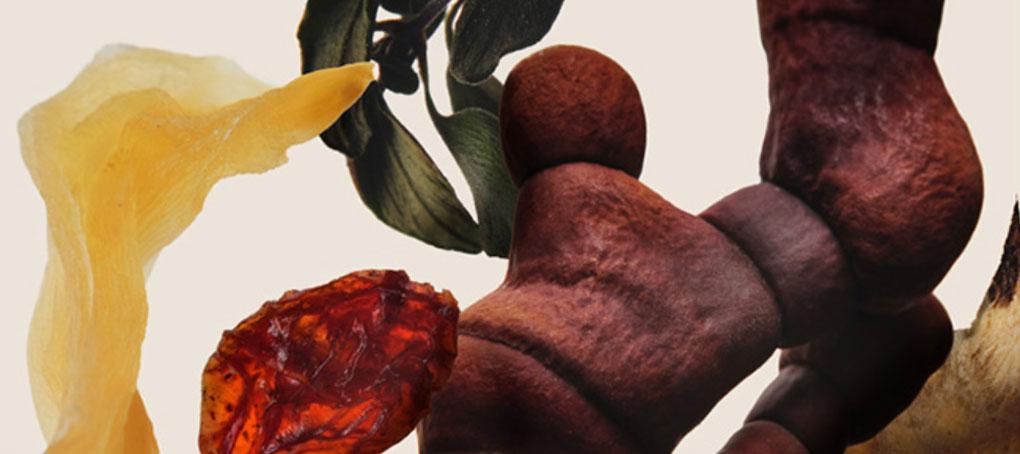
In particular, the ingredient includes with five traditional herbal remedies:
Overall, the ingredient promises to increase energy flow, while also rebalancing and reinvigorating skin to enhance the skin’s intrinsic energy and elasticity.
Gong Jin Solution™ combines four different patented technologies: patent no. 10-2168532, 10-216853, 10-222362 and 10-2411385.
⬥ Spokesmodels
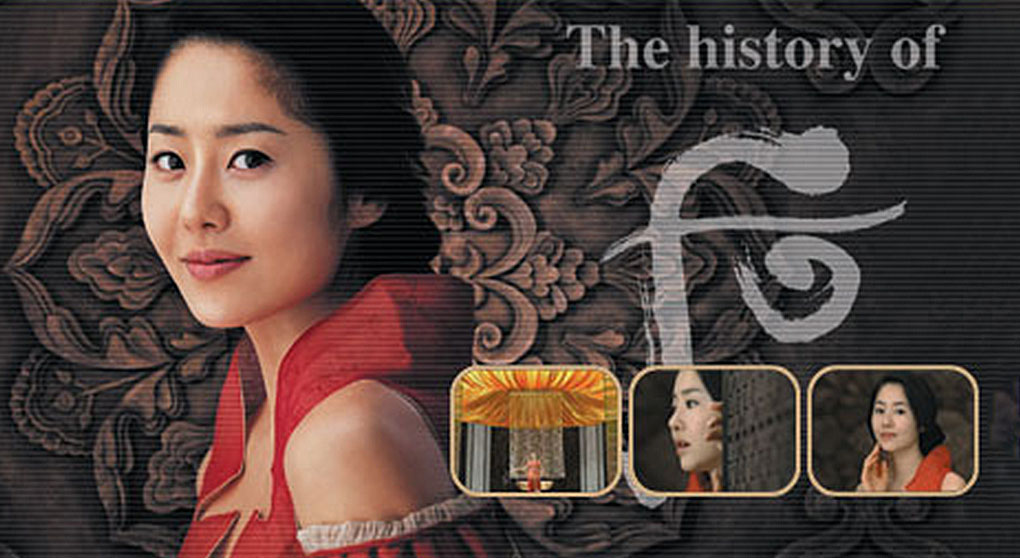
Campaign starring Go Hyun-jung (2005)
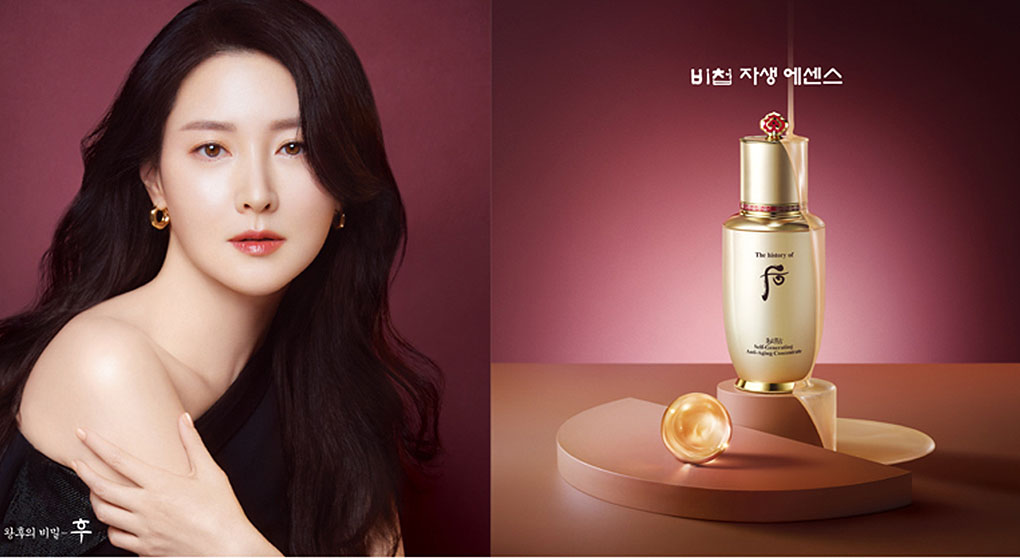
Campaign starring Lee Young-ae (2021)
In 2005 Korean actress Go Hyun-jung (고현정) was introduced as the first model for The History of Whoo. The actress signed a a one-year exclusive contract in March 2005 and starred in the brand’s first ever TV ad campaign in April of the same year16.
In May 2006 The History of Whoo announced Korean actress and superstar Lee Young-ae (이영애) was appointed as the brand’s spokesmodel. The actress initially signed a two-year exclusive contract for a record-high amount in the industry17, but has kept renewing her contract to this day. The appointment of Lee Young-ae is believed to have played a key role in the brand’s rise to fame in Asia.
A spokesperson for LG Household & Health Care said:
“Young-ae Lee is the perfect fit for the image of Whoo, a high-end brand rooted in Oriental medicine. Her elegant and graceful image, combined with her immense popularity across Asia, make her an excellent choice. We firmly believe that Young-ae Lee will play a crucial role in assisting Whoo in expanding into international markets.”
LG HOUSEHOLD & HEALTH CARE (2007)17, TRANSLATION: ODILE MONOD.
In 2024 LG Household & Health Care has named actress Kim Ji-won (김지원) as the new Global Ambassador for The History of Whoo29. Kim Ji-won will join the brand’s existing ambassador, Lee Young-ae, in representing the brand globally. With her established global fanbase, Kim Ji-won is expected to help raise international awareness and interest in the brand.
A spokesperson for LG Household & Health Care said:
“We believe that Kim Ji-won’s urban image and her vibrant, endearing energy, which she brings to her diverse roles and strengthens her presence as an actress, align well with The History of Whoo’s goal of providing unique value to consumers.”
LG HOUSEHOLD & HEALTH CARE (2024)29, TRANSLATION: ODILE MONOD.
⬥ Popularity
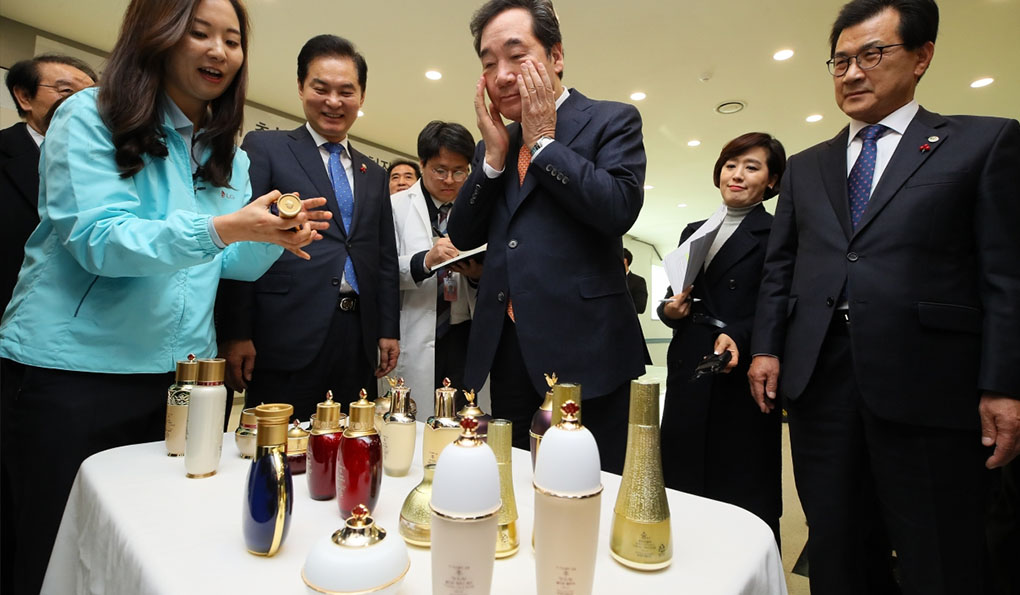
Former Prime Minister Lee Nak-yeon visits LG’s manufacturing plant [source: Yonhap News, 2019]
Thanks to a cult following in Asia, The History of Whoo became the first Korean beauty brand to achieve over KRW 2.5 trillion (USD 1.8 billion) in global sales18. This set a new milestone in the local beauty industry, making The History of Whoo Korean beauty brand with the highest annual revenue of all time. On January 2019 former Prime Minister Lee Nak-yeon (이낙연) visited LG’s manufacturing plant in Cheongju, Ulsan, to congratulate the company for their contribution to the industry19.

Brand Name
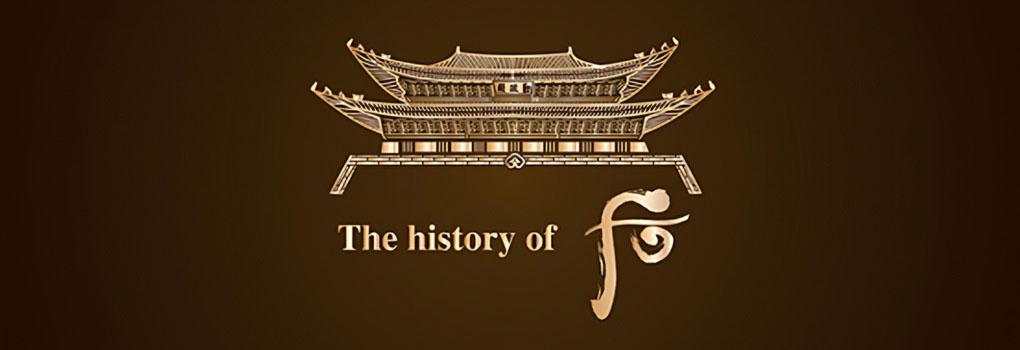
Despite being officially called “The History of Whoo” (“더히스토리업후”), in Korean the name of the brand is often abbreviated as “The Whoo” (“더후”), or simply “Whoo” (“후”).
“The History” (“더히스토리”) evokes both Oriental philosophy and the legacy of the queen’s secret beauty recipes, implying that the brand creates cosmetic products with the same precious care used in preparing traditional herbal medicines4.
The name “Whoo” stems from “후(后)” (“Whoo”), a Korean word with Chinese origins that translates to “Queen” or “Empress”. The single syllable of the name was chosen to emphasize the beauty of simplicity. In 2024 the brand announced they will mainly use “The Whoo” going forward28.

Brand Identity
The History of Whoo’s brand logo was commissioned by LG to calligraphy master Yangjun Park in 20021 and unveiled in 2003 in correspondence with the launch of the brand.
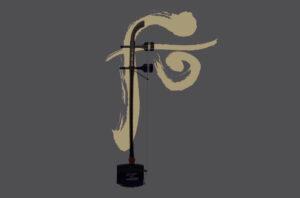
The logo represents a stylised “后” (“Whoo”), a Chinese character that translates to “Queen” or “Empress”.
The design of the logo was inspired by the traditional Korean string instrument Haegeum, one of the most widely used instruments in Korean court music. The instrument is always present in wind ensembles and plays a pivotal role in harmonising the sounds of both wind and string instruments. The History of Whoo picked the instrument to symbolise the brand’s commitment to creating products that restore the skin’s natural balance2.
Products from The History of Whoo often feature a stylised lotus symbol on its packaging. The brand chose the lotus flower, an ingredient that refines skin and evokes Korean beauty, to symbolise regal beauty and royal court mystique3.
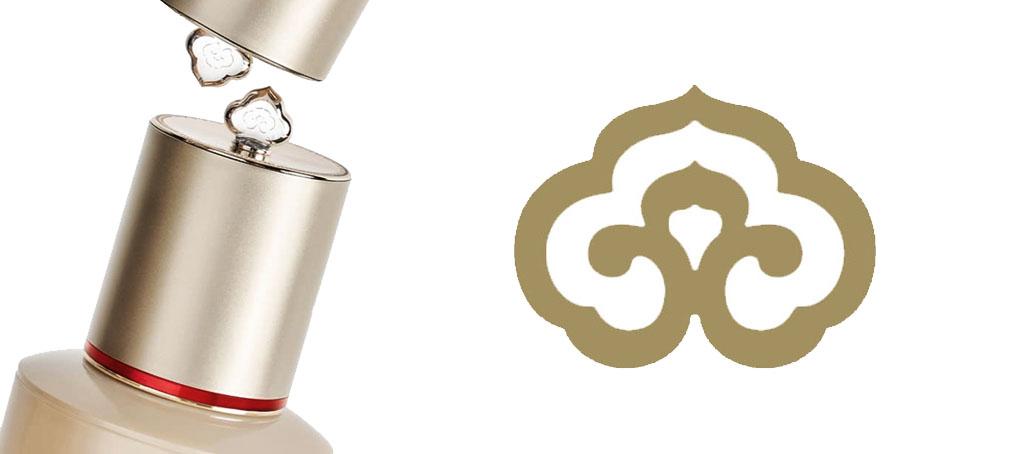
Furthermore, the elegant packaging of its products draws inspiration from Korea’s national treasures and traditional cultural symbols24. Some of the most notable examples are:

Research and Technology
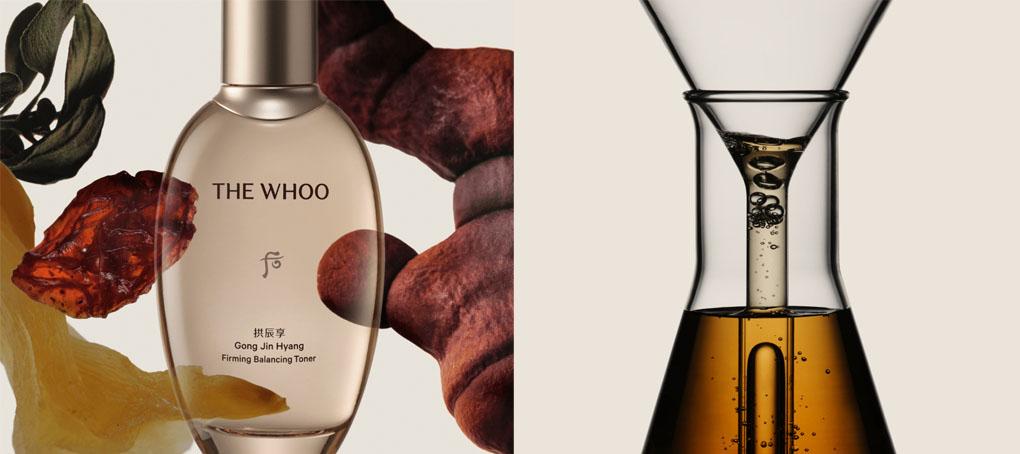
⬥ Korean Medicine Research Society
Since 2006, LG Household & Health Care has been responsible for operating the Korean Medicine Research Society (한방연구회). The society brings together Korean collages of Oriental Medicine, specialised companies and the Shanghai University of Traditional Chinese Medicine to develop novel dermatological theories that combine traditional Korean medicine and modern dermatology.
The research carried on by the society allowed LG Household & Health Care to develop effective formulas based on Traditional Korean Medicine theories7.
One of the most notable studies conducted by the Korean Medicine Research Society is about Yin Deficiency Syndrome (YDS). In 2019 LG Household & Health Care worked with the Korean Medicine Research Society to research the dermatological characteristics of Yin deficiency, a condition associated with premature aging and that manifests though Blood, Qi (energy) and Body Fluid deficiency.
The research findings were published on the Journal of Society of Cosmetic Scientists of Korea 9 and discussed during the spring conference of the same society10.
⬥ Whoo Oriental Medicine Skin Science Research Center
In July 2007 LG Household & Health Care opened the “Whoo Oriental Medicine Skin Science Research Center” (“후 한방 피부과학연구소”), the first research centre in Korea dedicated to researching cosmetic applications of Traditional Korean Medicine remedies5.
The Research Center was opened on the premises of LG H&H’s Daejeon Research Institute (LG생활건강 대전R&D캠퍼스) and consists of two teams: an Oriental Medicine Research Team and a Fermentation Efficacy Development Team6.
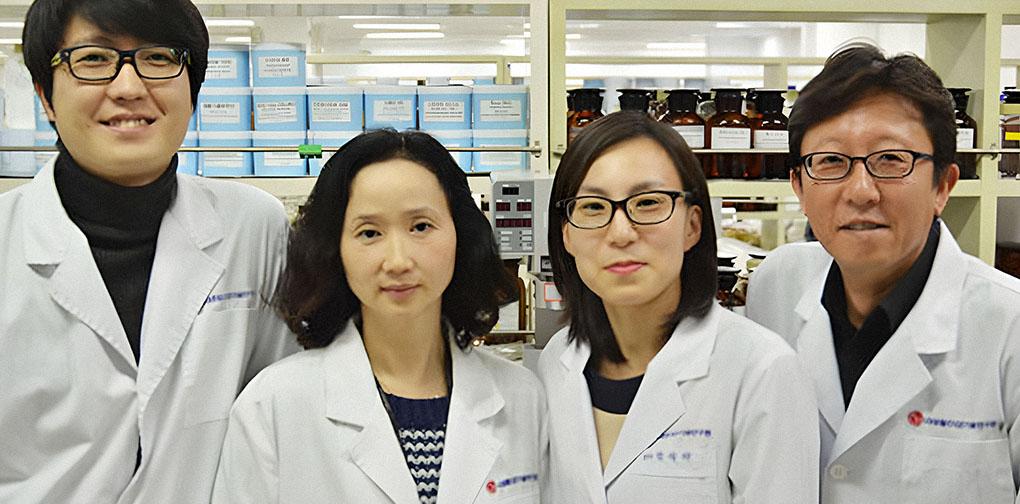
Researchers of the “Whoo Oriental Medicine Skin Science Research Center” [source].
⬥ Partnership with Beijing Technology and Business University
In 2019 LG Household & Health Care signed an agreement with the Cosmetics Research Center at the Beijing Technology and Business University to investigate traditional Chinese dermatological theories and beauty practices of Chinese imperial dynasties. In particular, in 2020 the company worked with the Chinese university to analyse ancient documents of the Tang Dynasty and study over 800 imperial beauty remedies11.
⬥ Raw Materials
In 2016 LG Household & Health Care established the subsidiary OBM Labs, a raw material supplier specialising in Traditional Korean Medicine extracts12. The subsidiary has been since providing raw materials for LG’s Hanbang beauty brands “The History of Whoo” and “Sooryehan”13.
In 2017 LG Household & Health Care worked with OBM Lab to establish a management system for Korean medicine extracts. The system allowed the company to boost the herbal extraction process, thanks to an improved production process and new analytical markers to identify Korean medicine contents14.
In 2018 LG Household & Health Care partnered with Useful Plant Resources Center (유용식물증식센터) at the Korea National Arboretum (국립수목원) to develop a technology that would allow LG to grow Hanbang raw materials that the company was forced to import due to its scarcity in the Korean territory. For this reason, the company established and donated R&D facilities worth KRW 200 million (USD 157k) to the Korea National Arboretum. These technological advancements helped LG localise production for many raw materials and increase consumer trust15.
In 2020 LG announced they will merge with OBM Labs and put the subsidiary under its managerial system to secure a stable supply of materials and tighten the security of commercial confidentiality8.

Product Lines
Explore each line’s unique benefits
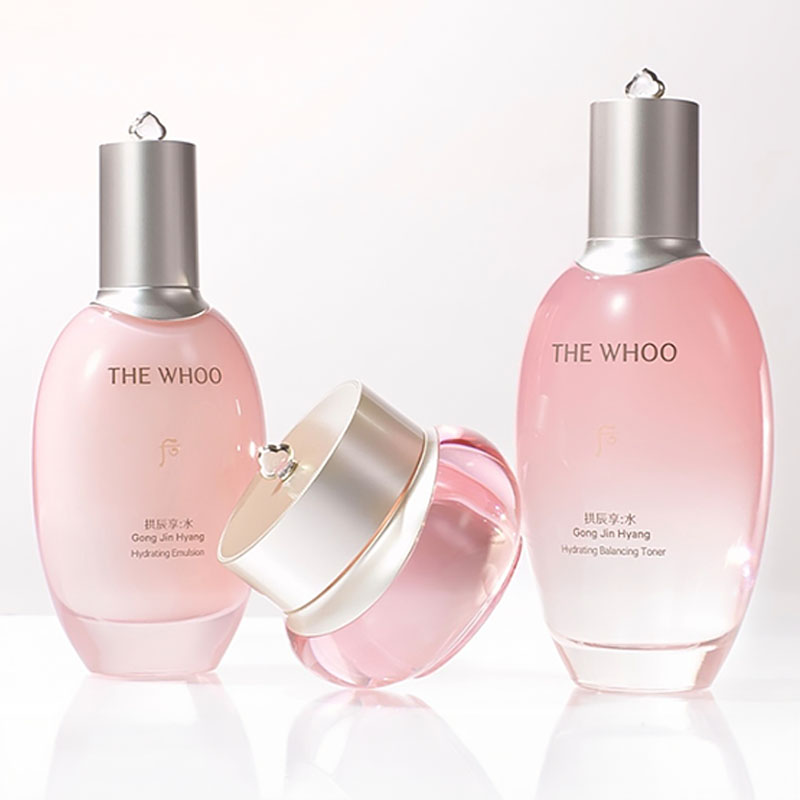
Gong Jin Hyang Hydrating
(공진향:수)
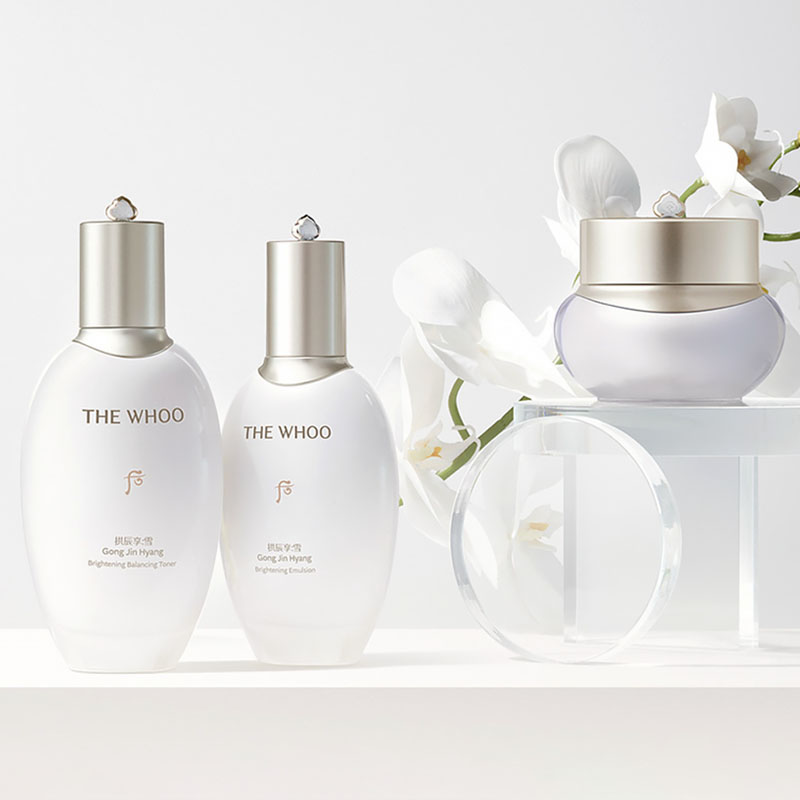
Gong Jin Hyang Seol
(공진향:설)
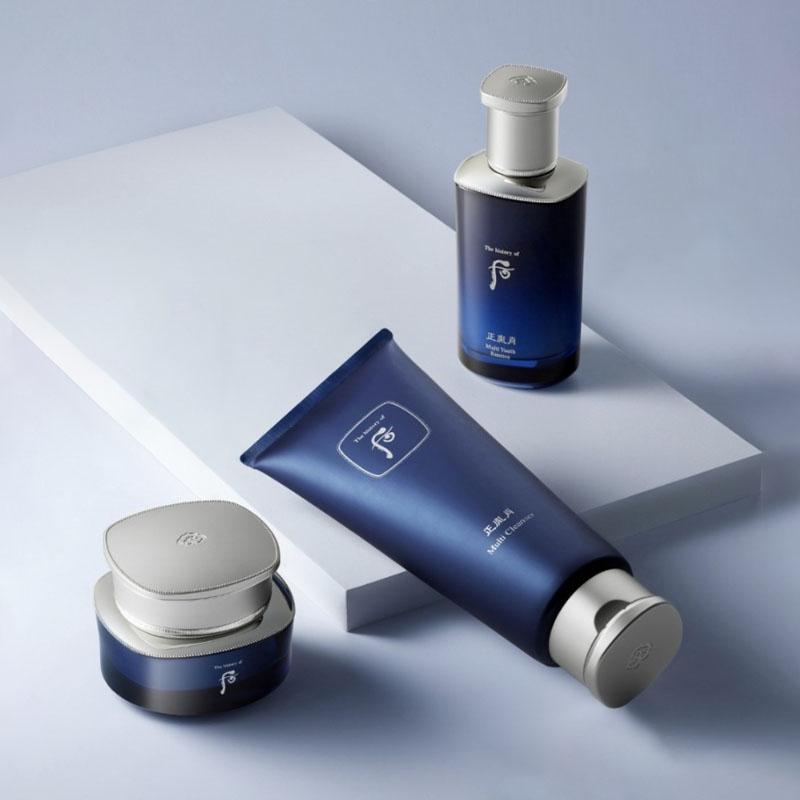
Jung Yuncho
(정윤초)
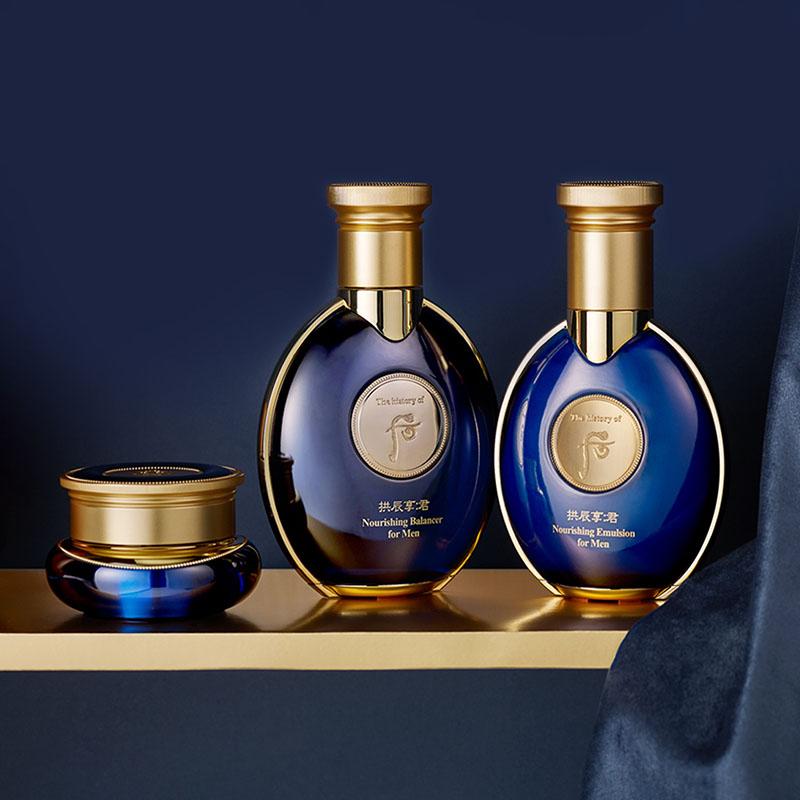
Gong Jin Hyang Gun
(공진향:군)

Links
⬥ Official Websites
⬥ International Retailers
Make sure to check out the Discounts & Coupons page to access exclusive offers for major Korean skincare retailers.
⬥ Korean Retailers

Notes
1. Park Y. (2011). 더 히스토리 오브 후(LG화장품 후(后) 로고 작품.
2. 피부 미학의 결정체, 더 히스토리 오브 후. (n.d.). Www.whoo.co.kr. Retrieved May 18, 2022, from https://www.whoo.co.kr/brand/birth.jsp
3. “The History of 후.” (n.d.). Www.whoo.co.kr, Retrieved May 18, 2022, from www.whoo.co.kr/mobile/brand/hehua.jsp
4. “The History of 후.” (n.d.). Www.whoo.co.kr, Retrieved May 18, 2022, from http://www.whoo.co.kr
5. LG Household & Health Care. (2007). “LG H&H Opens Whoo Oriental Medicine Skin Science Research Center, the First of its Kind in the Industry“.
6. 이원식. (2007). “LG생활건강, “후 한방 피부과학연구소” 설립.” 장업신문.
7. LG Household & Health Care. (2021). 2020 LG Household & Health Care ESG Report.
8. Business Report. (2020). [M&A] LG생활건강, 자회사 ‘오비엠랩’ 흡수합병.
9. Min, S. et al. (2019) “Study on the Skin Characteristic and Questionnaire according to Yin Deficiency Syndrome,” Journal of the Society of Cosmetic Scientists of Korea. 대한화장품학회, 45(4), pp. 381–388. doi: 10.15230/SCSK.2019.45.4.381.
10. LG Household & Health Care. (2021). 2020 LG Household & Health Care ESG Report.
11. LG Household & Health Care. (2021). 2020 LG Household & Health Care ESG Report.
12. Kim, So-In. (2020). “SK Bioland Deal May Trigger Further Transactions”. 더벨뉴스.
13. Kim, Jae-heun. (2020). “Retail Companies to Reorganize Business Structure.” Koreatimes.
14. LG Household & Health Care. (2021). 2020 LG Household & Health Care ESG Report.
15. LG Household & Health Care. (2021). 2020 LG Household & Health Care ESG Report.
16. LG Household & Health Care. (2005). “LG생활건강, 궁중화장품 ‘후’ 모델 고현정과 전속 계약“.
17. LG Household & Health Care. (2006). “Young-ae Lee Recruited as Model for Whoo – Plans to Further Penetrate Korean and Overseas Premium Cosmetics Markets“
18. LG Household & Health Care. (2020). 2019 LG Household & Health Care CSR Report.
19. The K Beauty, Science. (2019). “이낙연 국무총리, LG생활건강 청주사업장 방문.”
20. 朴乃善. (2003). “[LG생활건강] 송영희 상무 “화장품도 美學 마케팅.”” 조선비즈
21. 박지향. (2003).“LG, 고급 한방 브랜드 `후` 발매.” 장업신문.
22. 김문권. (2006) “[베스트 KT마크] LG생활건강 “더후”…상반기 260억원 매출.” 한경 뉴스
23. The History of Whoo Canada. (n.d.). “About Us.”
24. LG Household & Health Care. (2017). “1조 브랜드 행차요!“
25. LG Household & Health Care. (2017). “1조 브랜드 행차요!“
26. 김은진. (2003). “나도 한번쯤 써보고 싶다! 피부 보약, 한방 화장품.” 레이디경향.
27. 더후(The Whoo). (n.d.). 더후: The whoo. 더후(THE WHOO). https://www.thewhoo.com
28. 더후(The Whoo). (2024). https://www.instagram.com/p/C57-71wuC29/?img_index=1
29. 최효정 (2024, July 1). LG생건 “더후”, 글로벌 홍보대사에 배우 김지원 발탁. 조선비즈.
30. 나누리. (2023, February). 천문동[天門冬]의 효능과 섭취방법 알아보기. 나누리 블로그.
Words, Visuals: © 2025 Odile Monod unless otherwise stated.
Source: LG Household & Health Care unless otherwise stated.
The reproduction of any content, either in whole or in part, for commercial purposes is strictly prohibited without obtaining the explicit written consent of the author.
